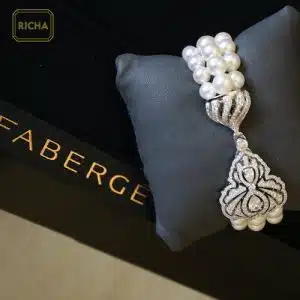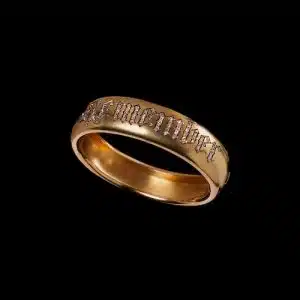What is causing the overwhelming desire among connoisseurs of luxury to acquire vintage jewellery and heritage works of art? We speak to Isprava home-owner and renowned journalist and storyteller, Richa Goyal Sikri to understand the motivations behind these shifts in the marketplace.
The art of self-adornment seems almost second nature as we go through the motions of getting ready every day. Each moment of reflection triggering a complicated series of analytical thinking; who we will physically or virtually meet, our mood of the moment, the desire to feel closer to a loved one or the requirement for mineral strength.
Till recently, anthropologists believed the evolution of thinking and resulting human behaviour, which led to the development of culture and communities occurred ~45,000 years ago. In 2004 however, a discovery in the Blombos cave in South Africa by archaeologist Christopher Henshilwood transformed that view. Henshilwood and his team discovered a selection of perforated beads for a necklace, which were 75,000 years old. According to Henshilwood, the simple act of collecting, creating and wearing the beads by early humans represents the advent of modern behaviour, leaving a beautiful trail of breadcrumbs guiding us towards a greater understanding of our ancestors and ourselves.

Beyond Africa, the culture of self-adornment through jewellery has deep roots in other ancient communities such as those residing in India. Unlike the West, where jewellery design and it’s components reflect the trials and triumphs of a multitude of eras, in India, designs and forms represent a bejewelled language empowering a mere mortal to first communicate with a higher power, then society at large, and finally convey intimate feelings of love, protection, seduction and surrender.
Underlining this history of humankind across the world are the many collections of heritage jewels in museums and private homes. They are tangible archives of culture, societies, and relationships.
So, what is driving consumers now towards heritage jewels? Geneva-based fourth-generation specialist in exceptional pieces, with expertise in rare gemstones and jewellery dating from antiquity, Thomas Faerber elucidates, “The first factor is visibility. Television, the internet, social media are all contributing towards greater understanding and appreciation of heritage artisanship. Secondly, heritage jewels or gems also provide the wearer with a sense of distinction, which in the age of mass-production and mass-consumption is crucial. Wearing vintage jewellery also allows a person to feel reconnected to their heritage or their ancestors.”
An extension of jewelled personal adornment is decorative arts and interiors. One of the many important steps we take as an independent adult is to beautify our home with furniture, art, embellishments that reflect our values, our lineage, our memories and our personality. When we step outside our haven, our clothes and the miniature sculptures (jewels) ornamenting our bodies visually communicate our position in society, our good (or weak) taste, our sense of self-worth and our intelligence.


Heritage jewellery expert and collector from the 85-year family brand, Gazdar Jeweller, Ravin Gandhi shares his views, “The importance of vintage or heritage pieces, whether in jewellery or decorative art is derived from its era. Certain periods in history have had a profound impact on humankind with accelerated trade and evolving culture, such as Victorian, Edwardian, Art Nouveau and Art Deco. The iconic nature of the art, interiors, and jewellery created then narrates tales of that time. High-quality craftsmen were employed to provide one-of-a-kind masterpieces. When such pieces are offered for resale – it is their ancestry and provenance that dictates their price beyond the intrinsic value of the material employed and the quality of technique.”
Playing their part in the preservation of material and art, luxury homes by Isprava salvage aged wood from 100-year-old shipwrecks to recycle for bed and mirror frames. Stained glass windows breath life and colour in homes, incrementally blending scientific benefits of colour therapy with patronage for local artisans.
As a vintage jewellery lover, for me, restored historical elements spread throughout my Isprava villa weave a tale of understated elegance, artisanship and refinement. Living in a space surrounded by art and visually pleasing, hand-crafted objects contributes towards a feeling of well-being; an essential part of the human experience.

– authored by Richa Goyal Sikri


